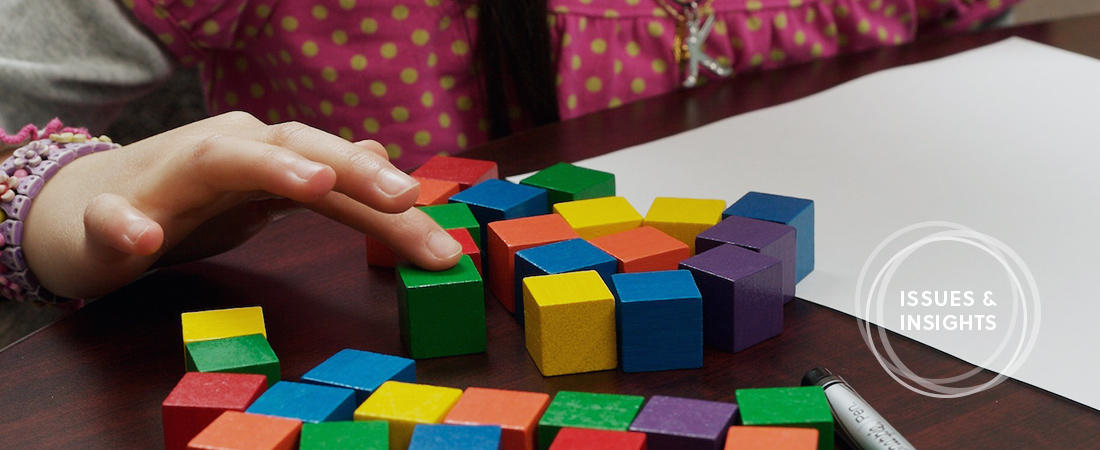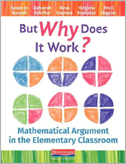Want Better Math Students? Argue.

When EDC’s Deborah Schifter wants to understand—really understand—how a young student is making sense of a mathematical idea, she asks a single question: “Why does it work?”
It’s an invitation for students to act like mathematicians and dig deep into their own mathematical thinking. It’s also a query that helps students become familiar with mathematical argumentation—the process of building, testing, and proving a claim.
“Even at a young age, students can reason about math,” says Schifter. And there are specific things that teachers can do to foster these reasoning skills.
Schifter is the coauthor of But Why Does it Work? Mathematical Argument in the Elementary Grades, a new book that helps teachers learn how to integrate mathematical argumentation, reasoning, and proof into their classroom practice. Here, she talks about the importance of this approach in elementary school.Q: Why should students learn how to make mathematical arguments?
Schifter: Argument and proof lie at the heart of what math is. These are authentic math experiences—just as planting a seed is an authentic science experience, or writing a fiction story is an authentic language arts experience. Students recognize they are doing important work when they are talking and reasoning about math. They stick with it. They work hard to figure out whether their theory, conjecture, or claim works because it is important to them.
Q: In your book, you talk about making mathematical arguments in elementary school. What skills do teachers need to learn?
Schifter: Activities that teach argumentation haven’t really become a common part of the elementary math classroom yet, but there are forms of argument that are accessible to young students. Our book gives teachers a five-step process for leading explorations about numbers and operations. Teachers learn techniques to help students notice patterns, articulate conjectures, and then create and test an argument.
Q: What gave you the idea for this topic?
Schifter: I wanted to help elementary teachers find a way to explore some of the ideas that students raise during math class. A first grader may say, for example, “6 + 7 has to be more than 6 + 4 because the 6s are the same and 7 is more than 4.” But if the lesson is focused on students learning addition facts (which is also important), the teacher might not ask about the idea underneath the student’s comment. I think that’s a missed opportunity. We started working with teachers by asking, what if we actually paid attention to these ideas? That’s where the idea for exploring generalizations and proofs came from.
Q: What is an example of a mathematical argument teachers should explore?
Schifter: Helping a student make a mathematical argument to either prove or disprove an idea can help her get to a more fundamental understanding of what the operations are, how they work, and how they are different.
Take the problem 6 + 8. A child may think, “I know that 7 + 7 is 14. And since 6 is one less than 7, and 8 is one more than 7, then 6 + 8 is also 14.” That thought process applies a sophisticated idea—that adding x to one addend, and subtracting x from another addend, doesn’t change the sum of two numbers. But imagine if the child tried to use the same logic with another operation. If 6 + 8 is the same as 7 + 7, then is 6 * 8 the same as 7 * 7? There’s something reasonable in this student’s expectation—she has seen this thing that happens in addition, and she is assuming she can do that with all operations.
So those are two arguments to explore. First, in addition, why does the sum stay the same if one addend increases by some amount and the other addend decreases by the same amount? And second, is there a similar process in multiplication, where you can change the factors, but keep the product the same?
Q: You prioritize building arguments around the four basic operations. Why?
Schifter: Young students spend a lot of time learning to calculate—to add, subtract, multiply, and divide. But operations are not just a set of instructions to do something—each has its own set of properties. And this is where young students get stuck. They will often apply their way of thinking about one operation to all other operations. For example, when you add two numbers together, increasing one of those numbers will also cause the sum to increase. Some students apply this same logic to subtraction—that in a – b = c, increasing b will result in a larger c. And that’s not true. When b increases, c decreases. Students who understand the differences between properties, and how the operations actually work, are laying the groundwork for success in algebra.
So, with this work, we are trying to make the operations more present in elementary school. It goes beyond just teaching kids to calculate. We want students to be more curious about how addition, subtraction, multiplication, and division work. And we’re trying to help teachers encourage that interest, too.
